The Millennary Exhibition
Publicly Funded Millennium Events and Programs in the Last Two Years
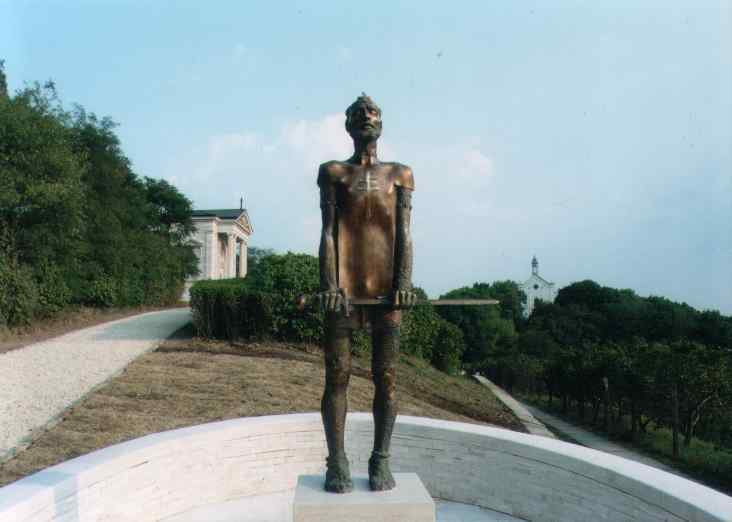
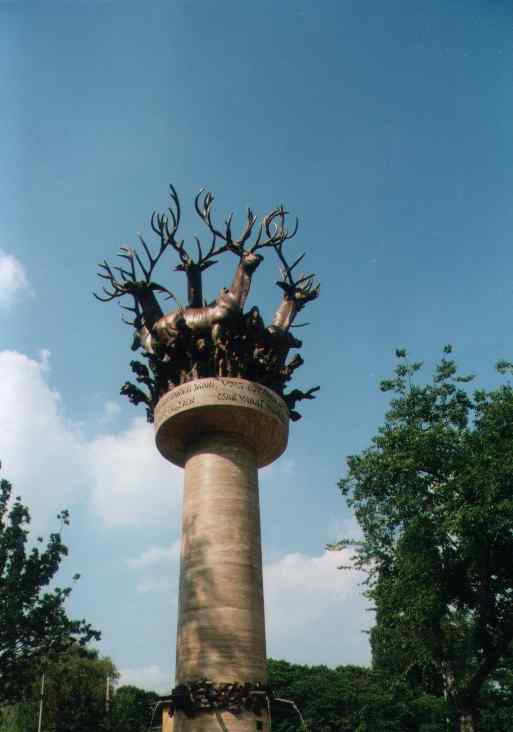
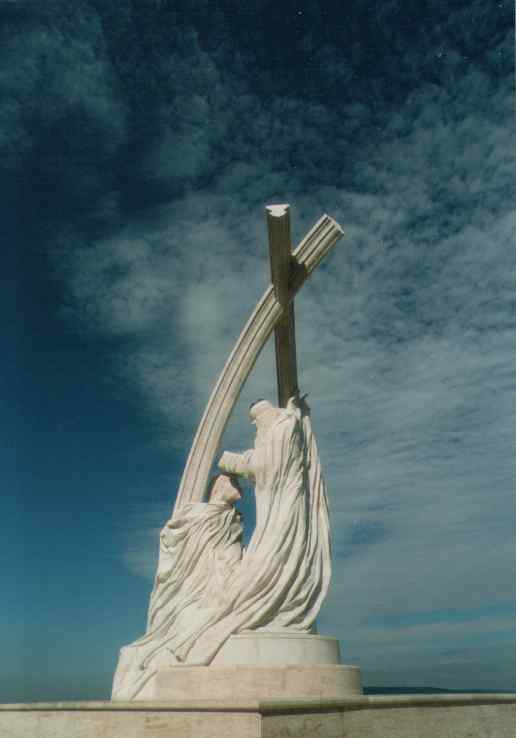
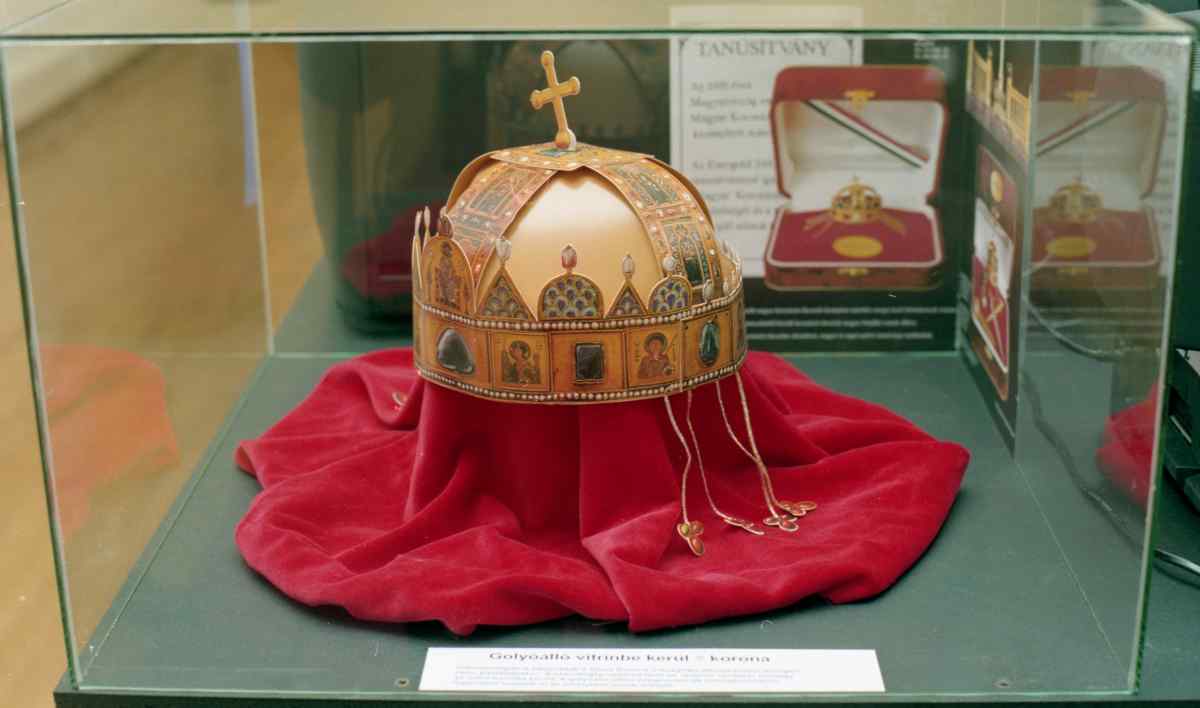
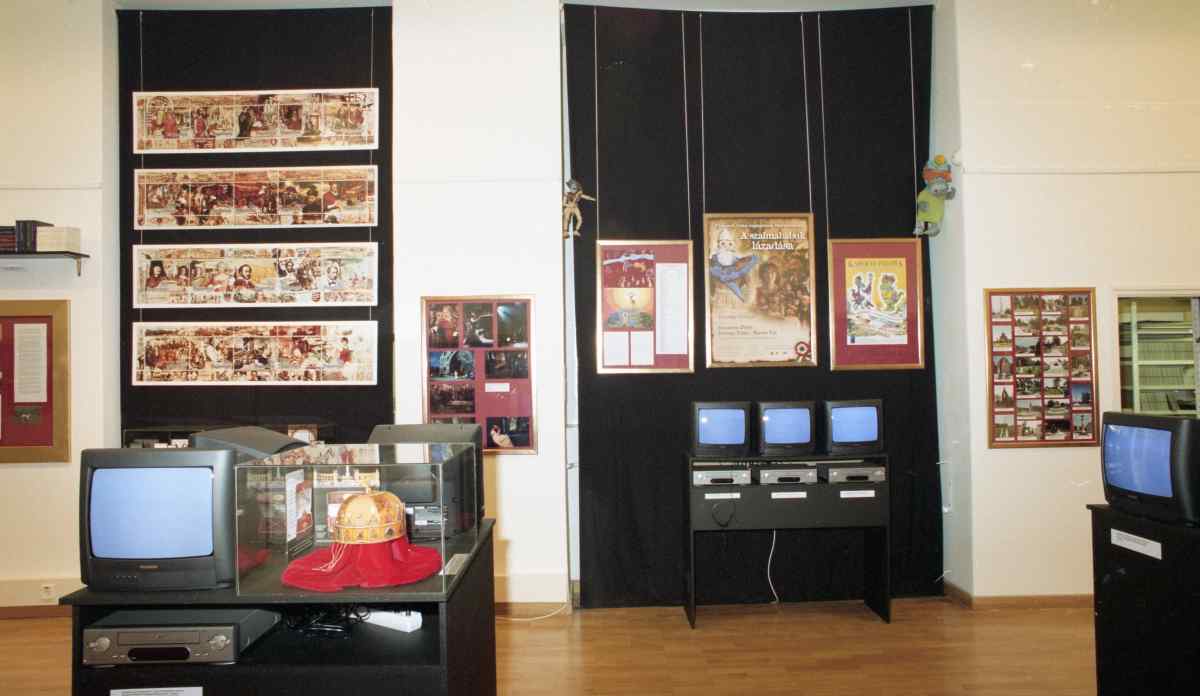
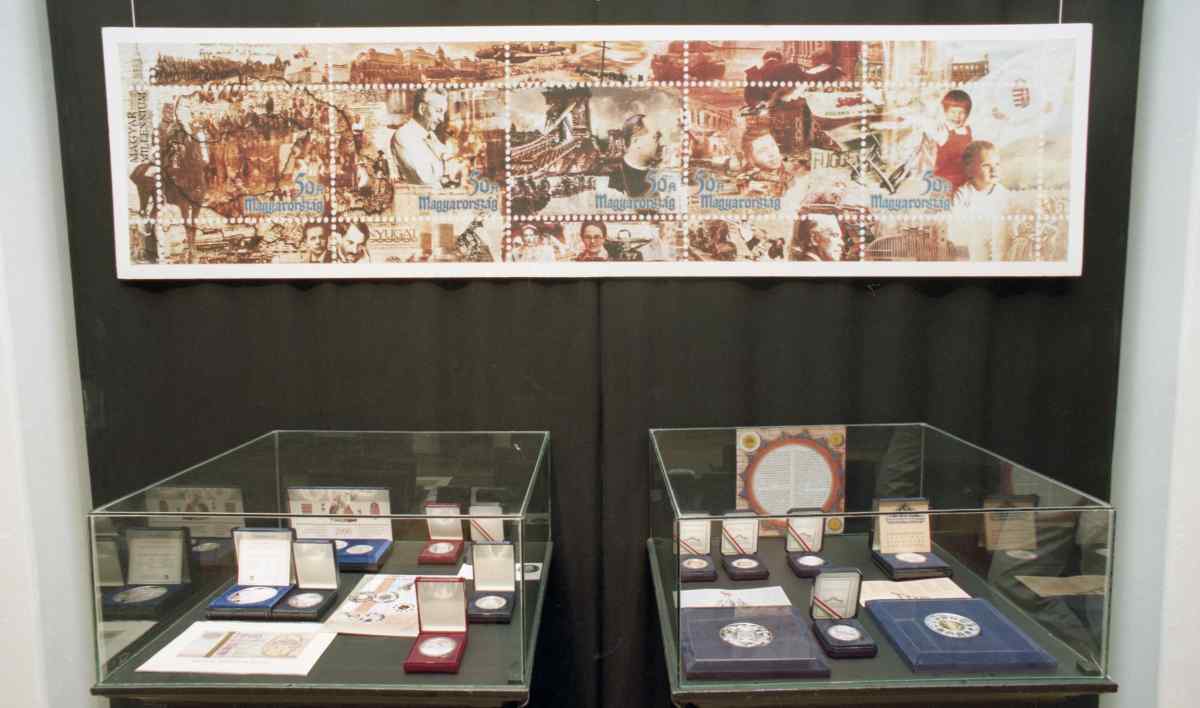

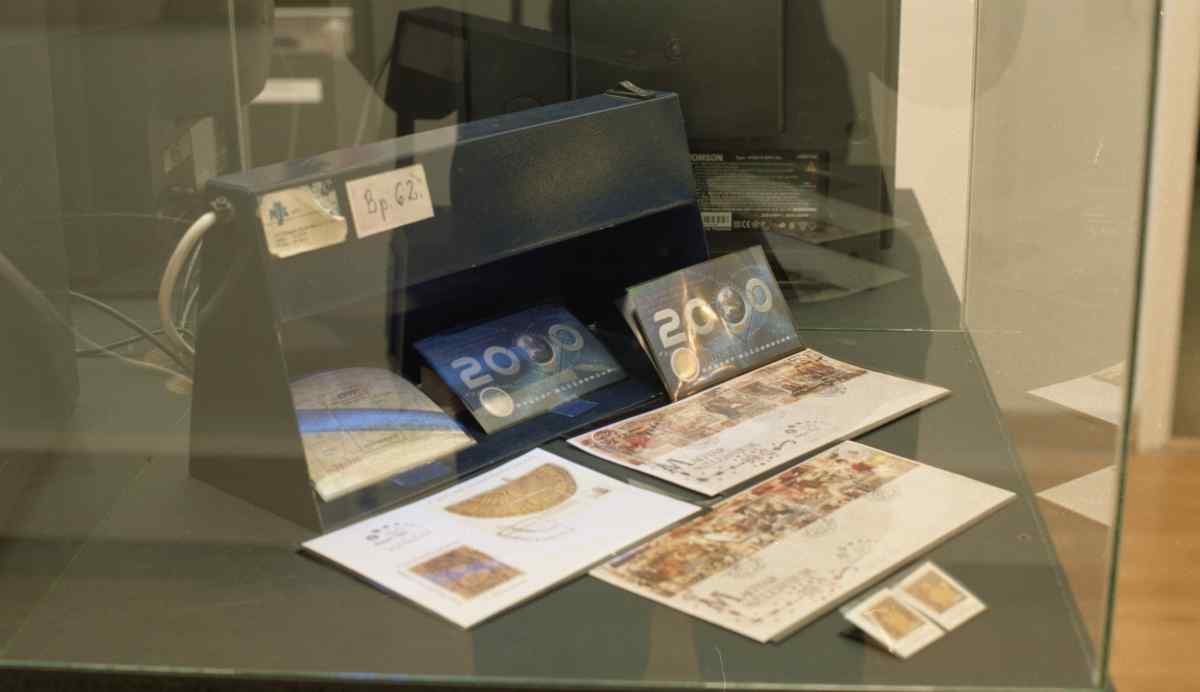

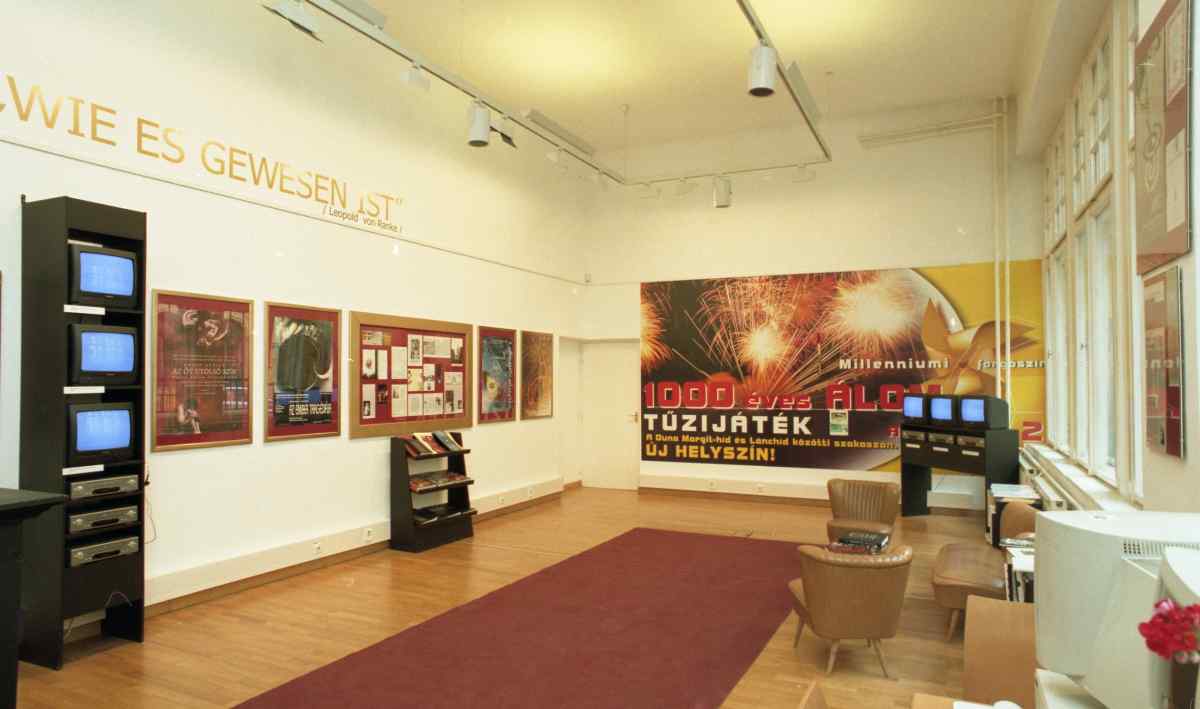
design: NEMZETES Ferenc, TAMÁSI Miklós
Our exhibition focused on the millennial events, programs, and works of art that received public funding in Hungary. This was the only exhibition so far that tried to give an overall picture of the kinds of official programs and centrally sponsored works that were created on the occasion of the millennium. To collect this material, we turned for help to the state institutions that organized, subsidized, and documented these events, including the Millennium Commissary Office, the Ministry of Cultural Heritage, the Religious Editorial staff of The Hungarian State Television, Duna Television, the Hungarian Radio, the Hungarian Post Office, the Coin Trade Joint Stock Company of the Hungarian National Bank, the Office for the Protection of Historic Monuments (previously the Committee for the Protection of Historic Monuments) and the Millennial Non-profit Company. The selection of material on display in the exhibition largely reflected the value judgments of the above-mentioned institutions: we showed the events and programs that they considered most important. In the same way, if an institution chose not to provide us with information or material on certain events or programs, then these did not figure in the exhibition. We did not comment on the material that was on display: the exhibits spoke for themselves.
The exhibition was partly a multimedia display: fifty monitors show feature films made with millenary aid, documentaries, and films of the transportation of the Hungarian Royal Crown to Parliament and to Esztergom, and of the commemorative events organized by different denominations. Official home pages and documents, as well as millennium events, can also be followed on computer screens.
Posters, museum catalogs, and calendars offered a taste of various exhibitions, while large-scale photographs showed the sponsored statues erected in public places. The millennial statuary and memorial parks of four counties were displayed on panels, and the traveling exhibition organized by the Ministry of Cultural Heritage—a synthesis of reconstructed historical monuments—acted as an “exhibition within the exhibition”. In the reading corner, visitors could examine subsidized books and other publications, such as the Millennium Tourist Guidebook series or the Magyar Nemzet series; commemorative stamps and coins were also on show, together with other official documents. The millennial flag of Döbörhegy could also be examined, together with the expert consultant's advice on the ceremony at which the flag was dedicated.
Exhibits were arranged in thematic groups: the Holy Crown, St. Stephen, Christianity – the Christian Church, Hungary – Greater Hungary – Trianon – the Carpathian Basin, folk art – preserving traditions. The millennium was the anniversary not only of the foundation of the Hungarian State but also of the adoption of Christianity, so commemorations and millennial programs co-organized by Church and State, or Church events subsidized by the state, played an important role in the exhibition.
The collection of official documents and declarations served to reconstruct the authorities' intentions with regard to the Millennium, and we hoped that the material displayed in the exhibition helped to establish the extent to which those intentions were actually fulfilled.
“It was thanks to St. Stephen's prophetic personality, his sense of mission, and his faith in divine providence, as well as his iron will, that the Hungarian state and the Hungarian nation became fit for the historic role they were to play for a thousand years.”
1st law of 2000